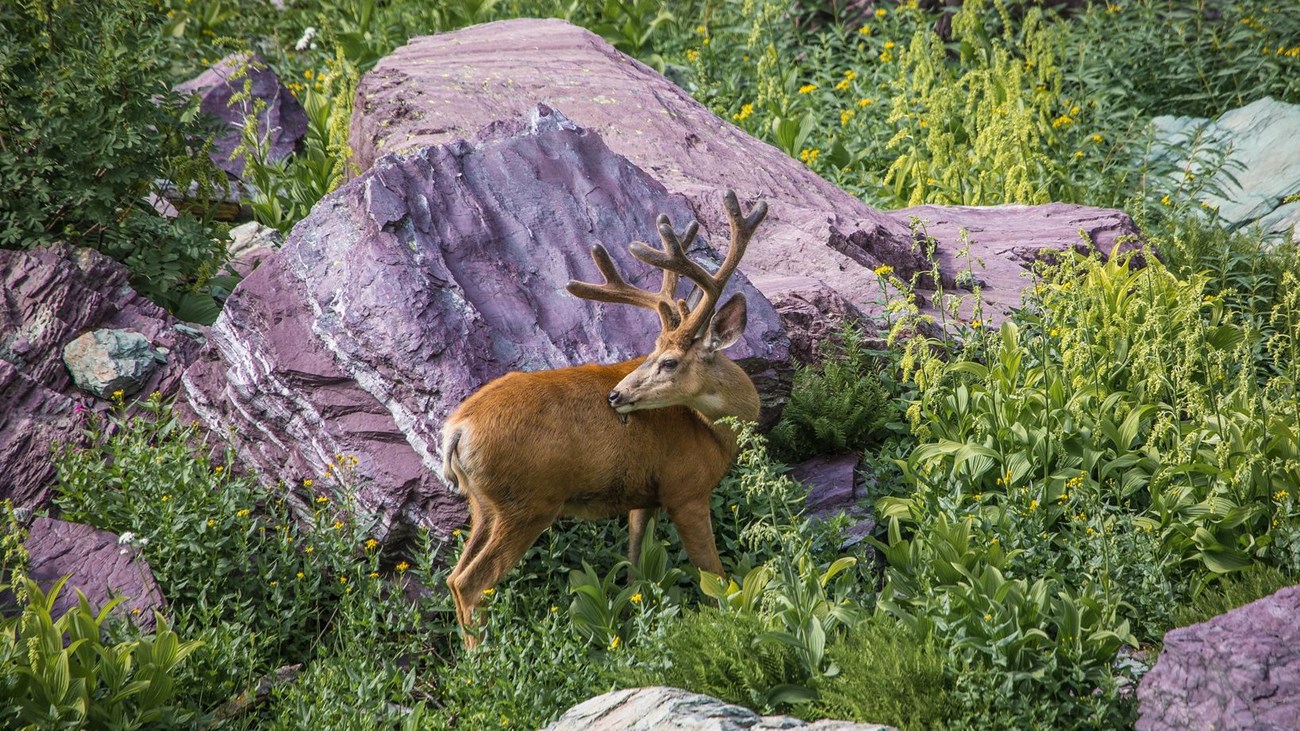Last updated: October 10, 2024
Thing to Do
Deer

NPS photo
Two types of deer are commonly seen throughout Glacier: the northwestern white-tailed deer (O. v. ochrourus) and the Rocky Mountain mule deer (O. h. hemionus). Both will flee when in danger. Males grow antlers from April or May through August or September and then shed them in the spring.
White-tailed deer have a reddish-brown coat with white hair found on their throat, near their nose and eyes, on their stomach, and on the underside of their tails. When they sense potential danger approaching, white-tailed deer will raise their tail to expose the tail’s white underside. This is a signal to other deer that a threat is near.
Mule deer have a black-brown forehead that contrasts with their lighter, grayish face. Mule deer have a white rump patch, and a slim white tail with a distinctive black tip. Mule deer also have mule-like ears that are very large — proportionally about three-quarters the length of their heads.
White-tailed deer have a reddish-brown coat with white hair found on their throat, near their nose and eyes, on their stomach, and on the underside of their tails. When they sense potential danger approaching, white-tailed deer will raise their tail to expose the tail’s white underside. This is a signal to other deer that a threat is near.
Mule deer have a black-brown forehead that contrasts with their lighter, grayish face. Mule deer have a white rump patch, and a slim white tail with a distinctive black tip. Mule deer also have mule-like ears that are very large — proportionally about three-quarters the length of their heads.
Details
Activity
Wildlife Watching
Pets Allowed
No
Activity Fee
No
Entrance fees may apply, see Fees & Passes information.
Location
Various locations
Deer are common in all areas of the park.
Reservations
No
Season
Year Round
Time of Day
Any Time
Accessibility Information
In addition to driving the Going-to-the-Sun Road and other park roads, the Running Eagle Falls Nature Trail, the Swiftcurrent Nature Trail, and the Trail of the Cedars are three of Glacier’s most accessible areas.
Improvements in accessibility are being made each year, and with a bit of pre-planning, all visitors can find Glacier to be a rewarding experience. Details on Glacier's accessible facilities and services can be found on the park's website nps.gov/glac/planyourvisit/accessibility.htm.
Improvements in accessibility are being made each year, and with a bit of pre-planning, all visitors can find Glacier to be a rewarding experience. Details on Glacier's accessible facilities and services can be found on the park's website nps.gov/glac/planyourvisit/accessibility.htm.
